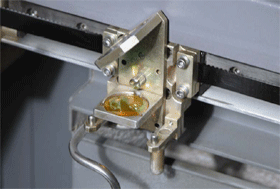 CO2 laser engraving equipment is being used in the sign industry to mark woods, plastics, metals, and other materials. But preventative maintenance of these machines is just as important a consideration in the overall process as knowing the substrates and designs that can be utilized.
CO2 laser engraving equipment is being used in the sign industry to mark woods, plastics, metals, and other materials. But preventative maintenance of these machines is just as important a consideration in the overall process as knowing the substrates and designs that can be utilized.
“It’s actually very easy to keep your laser system running its best, if you always keep it clean. That includes ensuring the area around the laser is free of clutter, combustible materials, explosives, or volatile solvents (such as acetone, alcohol, or gasoline),” says Mike Dean, vice president of sales and marketing for Epilog Laser.
The parts of the laser engraver that will need your attention, according to Dean, are the laser optics (cleaning); the optical strip/linear encoder (cleaning), the bearing rails (occasional cleaning/lubrication); and the exhaust (cleaning).
Meanwhile there are some common materials you can use to remove smoke and vapor from the table, the X-beam, and anywhere else on your CO2 laser engraver that collects dirt and debris:
* A soft cloth
* Cotton swabs
* Mild household solvent (like isopropyl alchohol)
The two most optical components most likely to require cleaning are the focus lens and the mirror directly above it. According to Dean, most optics are a clear-gold color, as well as bright and shiny; so if they instead appear cloudy or have smudges or debris on them, they’re going to need to be cleaned. “Inspect the optics weekly, as dirty optics can make for poor engraving quality,” he says. “Many owners may think [any problems they’re experiencing] is a machine issue, when in reality, all the need to do is ensure their optics are clean.”
For the vector grid/table portion of the laser engraver, there’s always a small potential for small pieces (particularly wood and acrylic) to fall through and collect in the table tray; this can, in turn, cause a fire hazard if not cleaned regularly with a small brush or a vacuum cleaner.
If you detect an odor while engraving or can see smoke from the cabinet in the area of the lens carriage, inspect her exhaust system for leaks and obstructions. “Ensure all connections are properly secured and check for loose or broken duct connections,” says Dean. “Use a wire brush to clean the plenum and exhaust port of your machine.”
Dean stresses that these tips are a little more general in nature, since every laser manufacturer is a little different when it comes to their equipment maintenance. It’s always important to follow their recommended advice.











